To install this Web App on your iPhone/iPad, press
 and then Add to Home Screen.
and then Add to Home Screen.

The Tylers and Bricklayers are affiliated to HMS Magpie
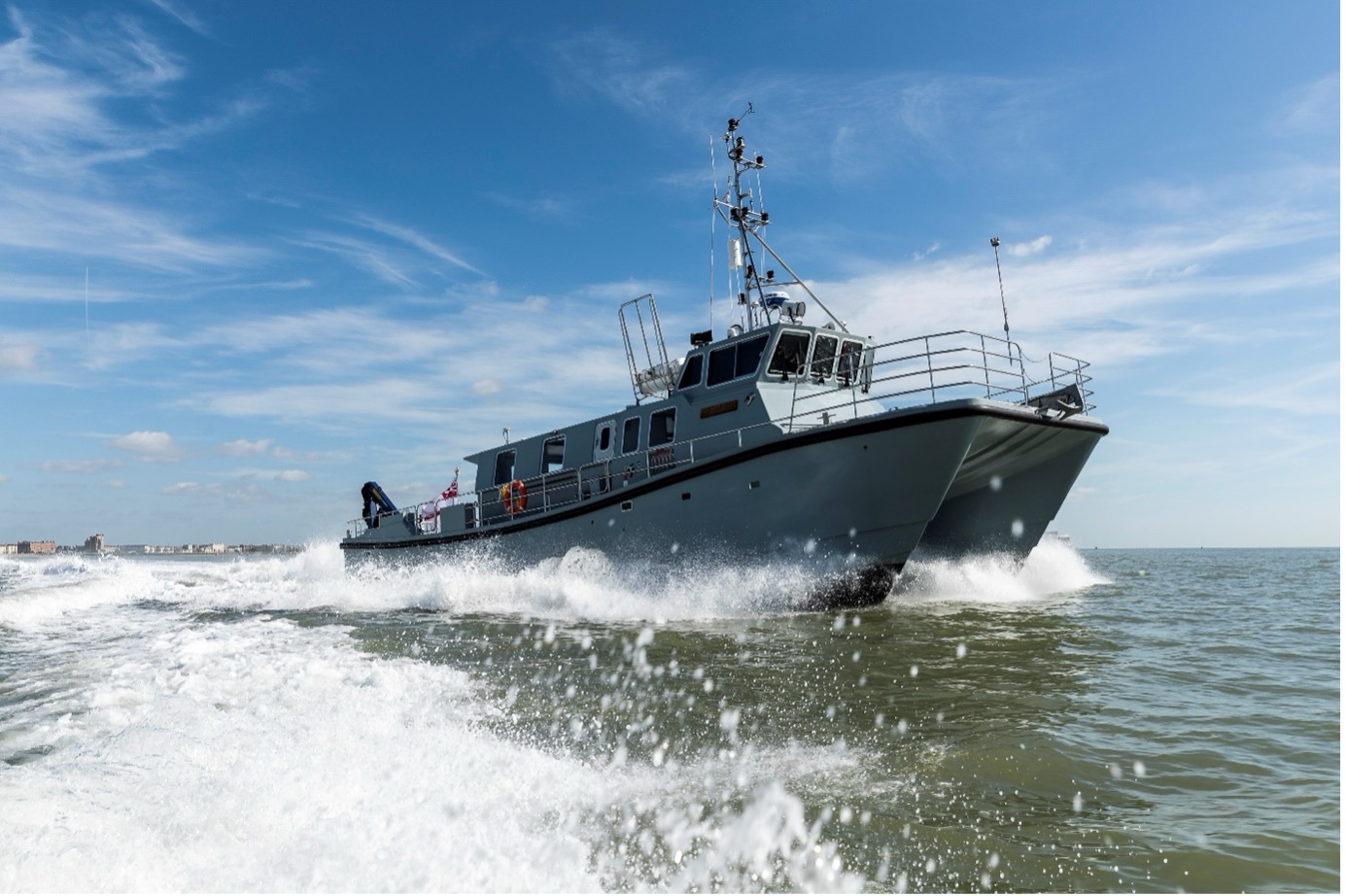
HMS Magpie is the Royal Navy’s only commissioned Inshore Survey Vessel, and whilst diminutive in size she packs a punch in terms of capability. At 18.5m long and drawing only 1.2m she is small and manoeuvrable enough to get into most maritime nooks and crannies, but stable enough to weather the moody seas typical around the UK coast. Her core workload comprises contribution to the defence of UK Critical National Infrastructure (CNI) by way of detailed hydrographic surveys of our key strategic ports. Whilst this work takes up the bulk of any given year, HMS Magpie remains at readiness year-round to support any short-notice tasking that requires its specialist equipment and skillset. Ultimately, the reasoning behind all Magpie does is this: the better we understand our underwater environment the better we can defend or exploit it when necessary.
HMS Magpie’s motto: Lux in tenebris lucet’ (Shine Light into Darkness)
An interesting tale lies behind about the current HMS Magpie ship’s badge.
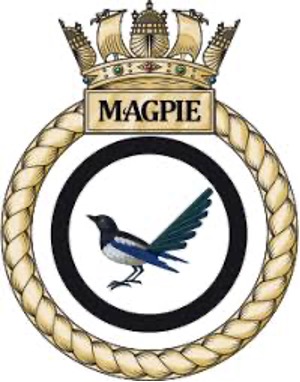
Since 1919 every ship in the Royal Navy has had an official ship’s badge or crest. Designs are submitted as watercolours and those which are approved by the Admiralty are passed to the College of Arms for a’ Sealed Pattern’ to be made. As with livery Armorial Bearings, a ship’s badge will have a “blazon” with descriptive words in French or Latin.
Originally, the shape of a badge would vary for different classes of ship or shore establishment but often badges have been adopted by a series of ships given the same name.
There have been seven previous HMS Magpies in the Royal Navy. The first was a re-named prize – a four-gun schooner captured at Perros in 1807. The last but one was a sloop of the Black Swan Class, launched in 1943. She saw active service in the Atlantic, the Arctic and off Normandy and in 1944 formed part of Captain F J Walker’s Second Support Group and, along with sister ships HMS Starling, HMS Kite and HMS Wild Goose. These, helped in the sinking of German submarines U238 and U592 in that year.
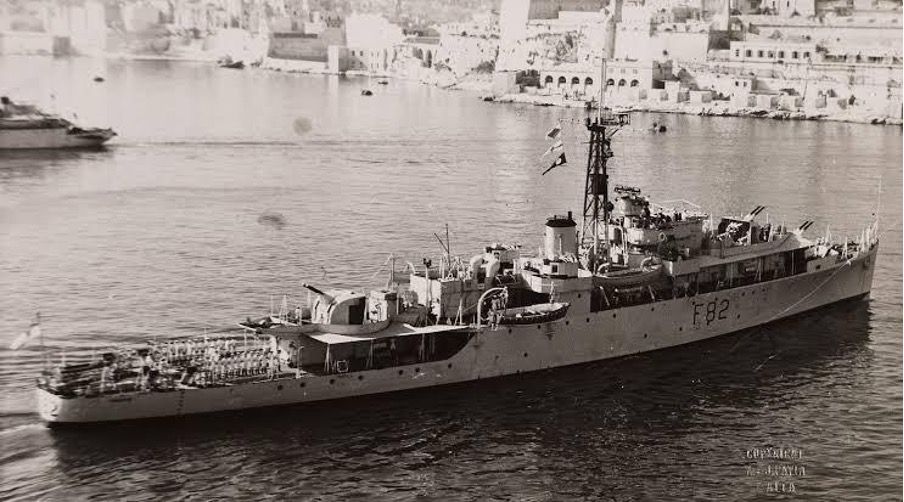
On launch In January 1943 HMS Magpie had been granted a badge consisting of a magpie volant proper. The story goes in September 1952 a pupil from Monkton Combe Junior School in Bath visiting Malta saw HMS Magpie in harbour. The badge of his school happened to be a magpie and this appeared on the cover of the Junior School’s magazine called The Magpie, which dates back to1899 . Armed with a copy of the magazine, young Michael Swift took the initiative to make contact with the crew of HMS Magpie! Out of this magpie connection led to a link being forged between the school and the ship.
The Commanding Officer of HMS Magpie at the time, Cdr Graham Lumsden DSC, was rather taken by the design of the magpie used by the school. This had been recently redrawn by a previous art mistress, a Miss Bulmer. In 1951. He decided to enlist the support of a previous CO of HMS Magpie, HRH Prince Philip, in an effort to get the ship’s badge changed.
In January 1953 a letter arrived at Monkton Combe Junior School from a Secretary at Buckingham stating “His Royal Highness feels that your Magpie is nicer than the present ship’s badge and he has asked me to write to the Admiralty to suggest that it might be substituted for the one in existence.”
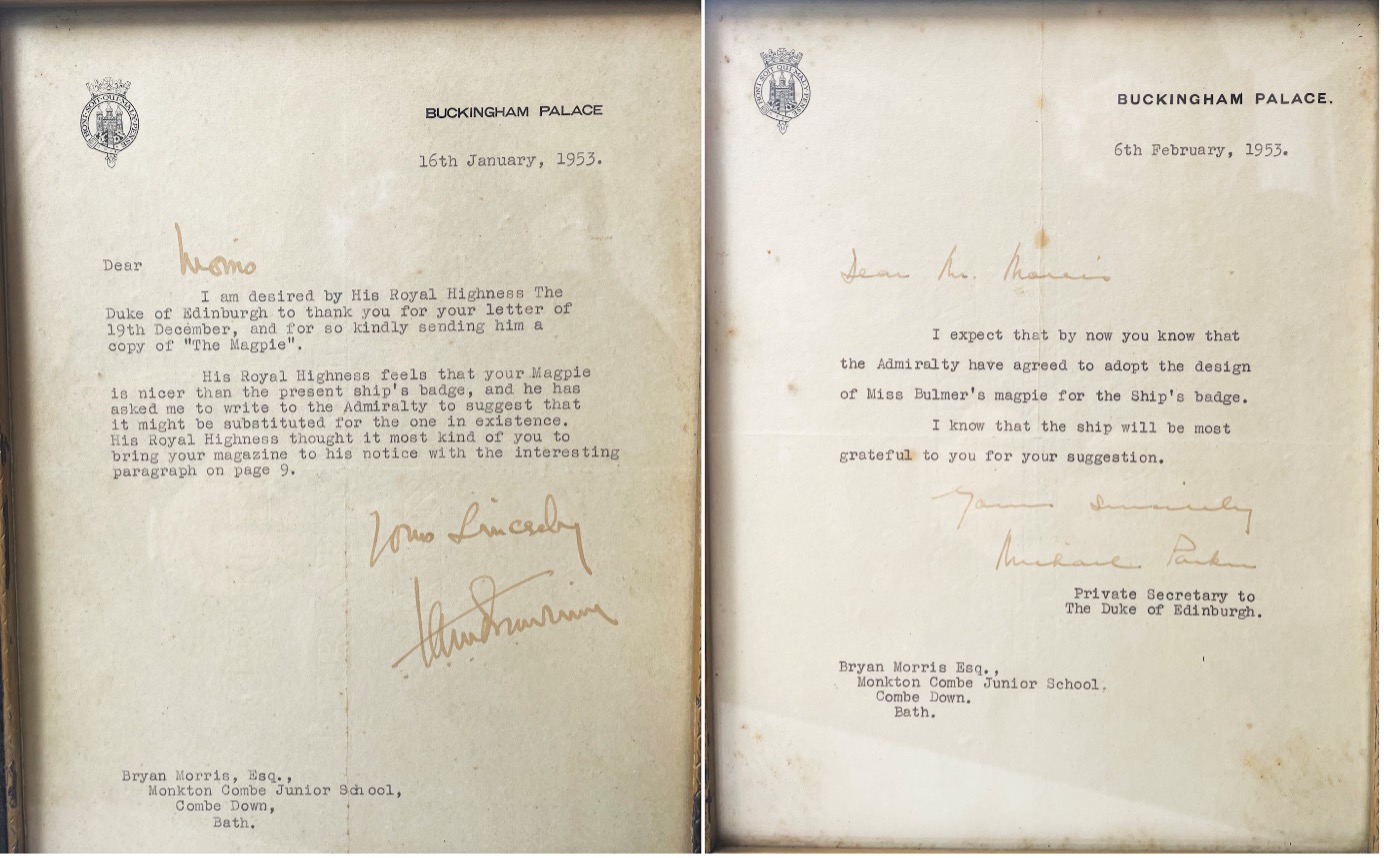
In May 1953 this change was achieved and a new badge was granted; this was blazoned as magpie statant rousant proper.
Apart from the bird being turned to face the other way, the magpie was that of Monkton Combe Junior School. A black annulet around the magpie was symbolic of unity and friendship, officially linking school and ship.
Sadly, soon after in 1956, HMS Magpie went into reserve and then to the breakers’ yard in 1959. One of HMS Magpie’s final appearances was to ‘act’ the part of HMS Amethyst in the film The Yangste Incident. As a token of the ship’s friendship with Monkton Combe Junior, the School was presented with the ship’s brass bell and an old ship’s badge. Two school sweaters featuring the new badge of their father’s old command found their way to Buckingham Palace, now maybe cast-off clothing once worn by the King and Princess Royal.
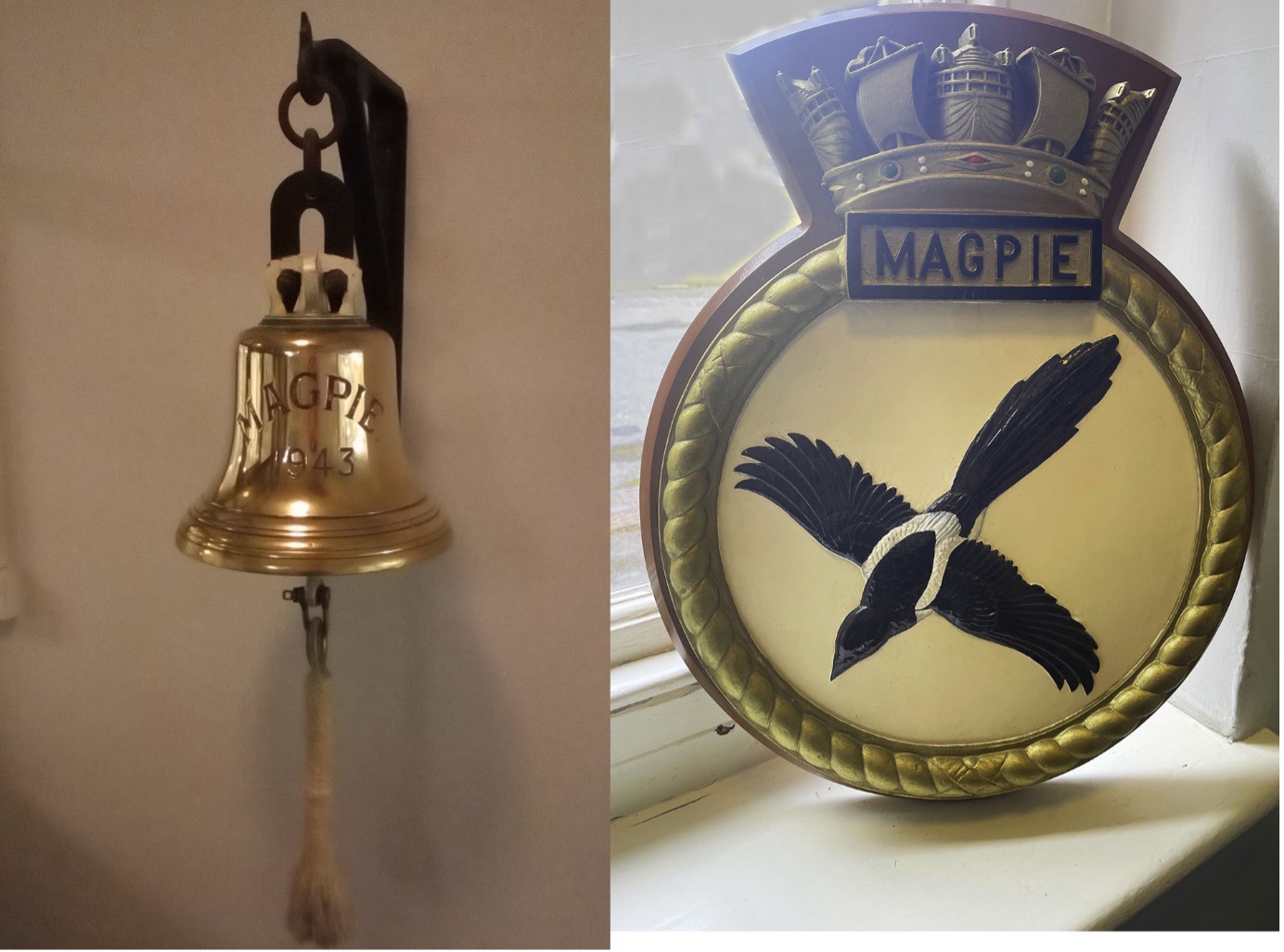
In 1970 the Magpie’s badge made an appearance in the South Atlantic, this time on a postage stamp – the Ascension 2s.6d. issue, being one of a series featuring Royal Naval badges.
The Royal Navy now of course has a new HMS Magpie (the eighth HMS Magpie) and Monkton School representatives were in attendance at the launch in 2018. The Worshipful Company of Tylers and Bricklayers has an affiliation with this ship, a small twin-hull inshore survey vessel. It was launched with the motto ‘lux in tenebris lucet’ (Shine Light into Darkness) - words that had been given the seal of approval by the late Duke of Edinburgh. The ship bears the new badge that HRH Prince Philip had helped to change in 1953.
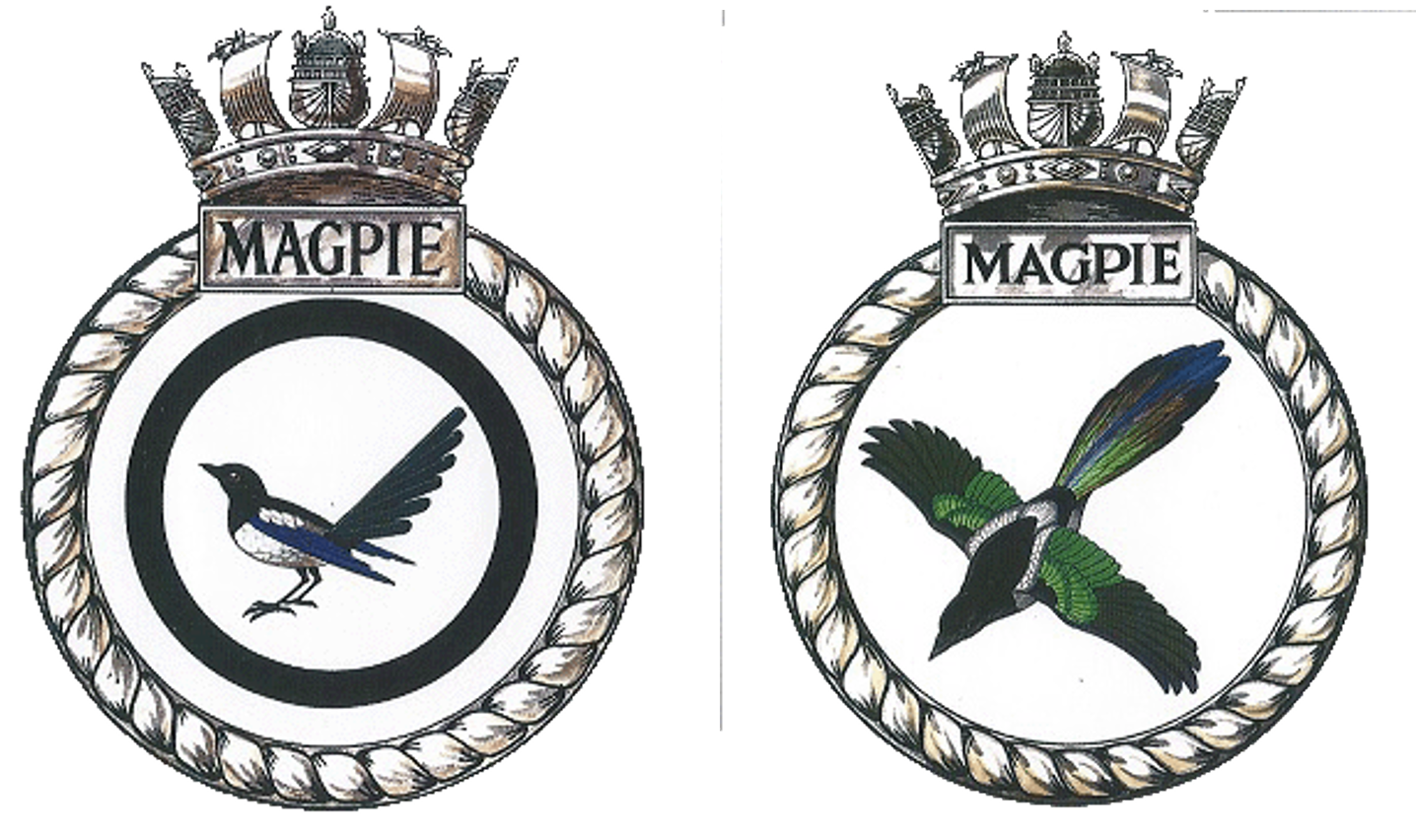
The left crest dates from 1953 and the right crest from 1943. The revised 1953 crest was later adopted by the current HMS Magpie H130
You can read more about HMS Magpie by clicking HERE
And you can view a video about HMS Magpie HERE
David Williams - Court Assistant